“Gelbe 14…Der Stern von Afrika”
Eduard 1/48 Bf 109F-4Z/Trop, W.Nr 8673
Hpt. Hans-Joachim Marseille, Quotaifiya AB, Sep 15, 1942, following his 151st kill. This was his last Bf 109F before he was ordered to fly the Gustav by Generalfeldmarshall Albert Kesselring. He was later killed in a failed bailout attempt when his new (first combat mission for this plane) Bf 109G-2, W.Nr. 14256 suffered an engine failure/fire.
I've been wanting to do this build for some time now, and Erik Gjørup's WIP posts here on iModeler for this kit gave me the inspiration I needed.
Kit:
For this build, I used an Eduard 1/48 Bf 109F-2/4 Overtrees kit and Eduard 109F-4 PE set. A VERY nice thing about most Eduard kits is that they give you a lot of extra parts that allow you to build many different sub-variants of the same basic airplane. This made building an F-4/Z Trop a snap. The “Z” model used GM-1 boost to increase horsepower and thus the airframe was a bit different from the basic 109 F-4. You are provided parts for the deeper/larger oil cooler intake/scoop under the nose, the larger supercharger intake on the left side of the fuselage, and the tropical air filter. The kit also gives you a choice of propellers, which is nice because this specific aircraft was equipped with a VDM9-12087A broad blade propeller normally used only on Gustavs. The Eduard PE set makes for a beautiful cockpit and also provides “stiffeners” for the aft fuselage…a weak point on this aircraft.
Decals:
I used Lifelike Decals 48-035 Limited Edition Me 109 Part 7 set for this build. I discovered these decals on eBay while searching various options. This package is superb. You are provided decals and stencils for four of Marseille's various 109F's and VERY detailed discussions of the paint schemes and stencil use for each. A bonus is decals to build his Kübelwagen, “Otto”. The Italians gave him this vehicle to commemorate his most successful day of Sep 1, 1942, when he shot down a total of 17 allied aircraft during three missions and eight in a matter of ten minutes. I will build that little beauty at a later date to go with this model.
Build:
The very first thing I did during the build was intentionally break off the pitot tube. It is very dainty and was going to get broken anyway sometime during the build. So, I saved myself that bit of aggravation. This kit went together nicely. I used NO putty anywhere during the build. The fit is precise and tight so trimming sprue nubs and dry fitting parts is a must if you want to avoid any self-induced gaps. The “missing in action” pitot tube was now fabricated from a 27-gage hypo needle inserted into a 22-gage needle and was put in its rightful place on the port wing. I don't have to worry about that getting broken anymore. Once this was done, I gave the model a coat of white Stynlrez primer. Vallejo Air paints were used throughout for the standard desert paint scheme…RLM78, RLM79, and white ID markings. And yes, the tail wheel did have white sidewalls. I used the new AK weathering pencils on the matte paint surface to make dirt and grime streaks as well as oil and fuel leaks. I really do like the way they performed with a water dampened brush to do subtle shading…much easier than other colored pencils. It's a lot like using MiG Oil brushers except they are water based and dry a lot faster. Following a clear coat of Alclad Aquagloss, I applied the decals. The Lifelike decals were easy to use, but didn't seem to settle really well into surface details when I first used my standard Micro Sol and Micro Set routine. I turned to Solvaset which settled them nicely. Of note, the Balkenkreuz placement on the sides of the aircraft are not symmetrical with the fuselage center line. Instead, they are placed in reference with fuselage panels. Likewise, not all stencils are used because this aircraft was repainted after it left the factory. The RLM79 goes to the bottom of the sides instead of the usual fuselage mid-point…hence the oxygen and electrical inlet stencils are missing. The decals were now sealed with a coat of clear gloss followed by a brown/black oil pin/panel line wash. This brought out the outstanding surface detail of this kit. I normally finish my 1/48 German fighters using a satin varnish because it seems to look truer to scale. I tried that here at first but it didn't look quite right so I used Vallejo's matte varnish. I think it looked better…more like a dusty, desert airplane. The final touches were the radio antenna cable made from EZ line and the underbelly FuG25 antenna made from a flexible bristle from a nylon brush (I hate breaking antennas AND pitot tubes).
I hope you like it.
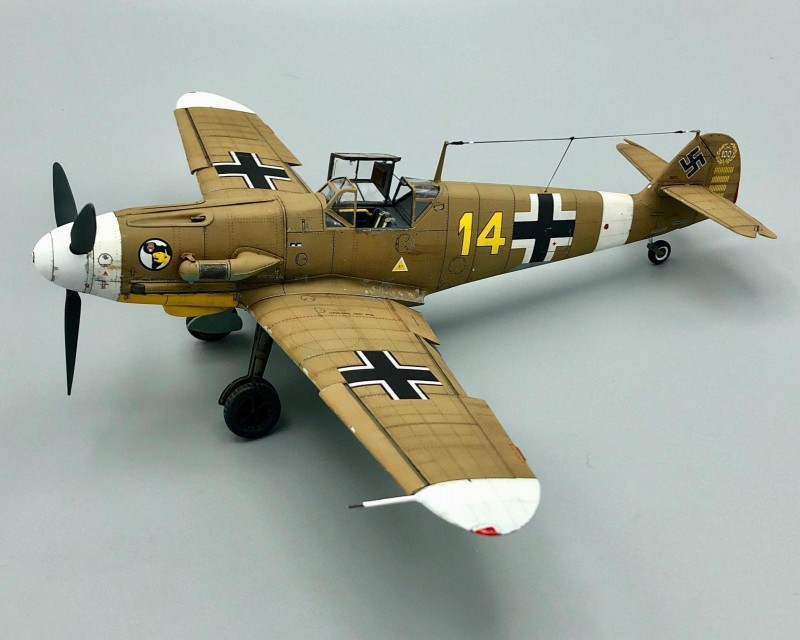
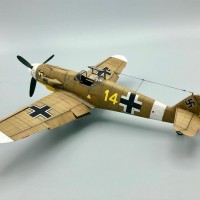
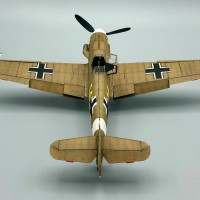
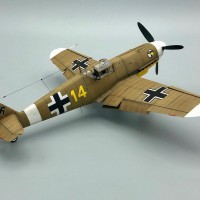
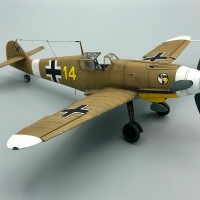
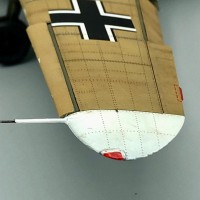
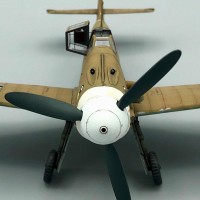
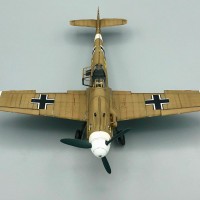
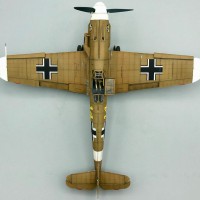
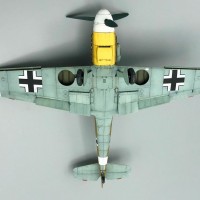
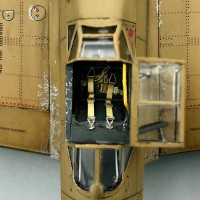
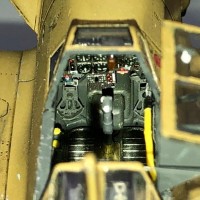
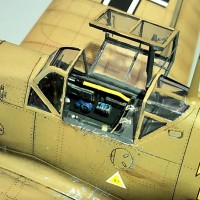
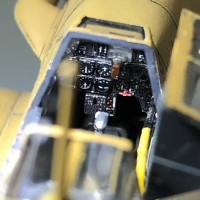
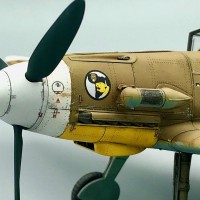

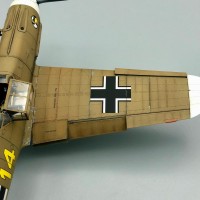
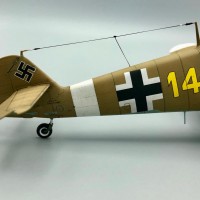
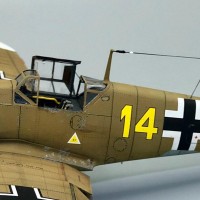
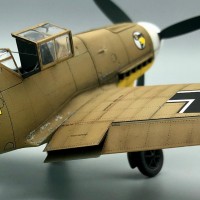

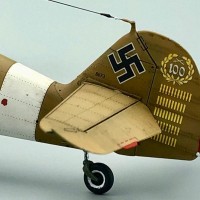
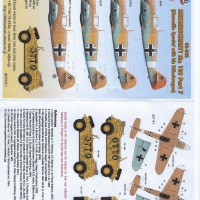
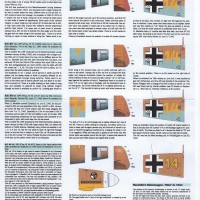
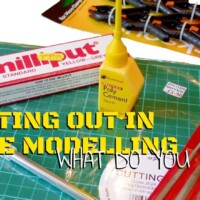
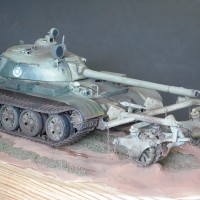
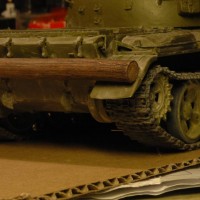
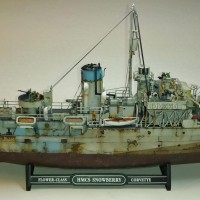
That right there is a smart-lookin' model, sir...very nice indeed !
Nicely done Tom, great pics as well which show off the detail and weathering that you've done.
This is a superb model of a 109 ! Very nicely done indeed. I agree that Erik's recent build journals have been very inspiring too. Just what the doctor ordered...
"liked"
This build was so well researched! The build is exquisite and very realistic, feel like I wanna jump in, start the engine and fly away into the world in scale 1:48! Well done Tom!
Really impressive, Tom - a stunning piece of work! The painting and weathering are spectacular!
Beautiful build Tom !
beautiful
That is one nice 109, and a great story with the background and all! - I shall be looking forward to seeing OTTO later on 🙂
Thanks, Erik. Like I said, you got me off my butt and got me working...
An inspirational build! Excellent photographs, thanks for posting!
Wow, amazing detail work!
Fantastic build, Tom! A real beauty.
Thanks, Greg.
Very nice looking aircraft. Love desert camo
Awesome work.